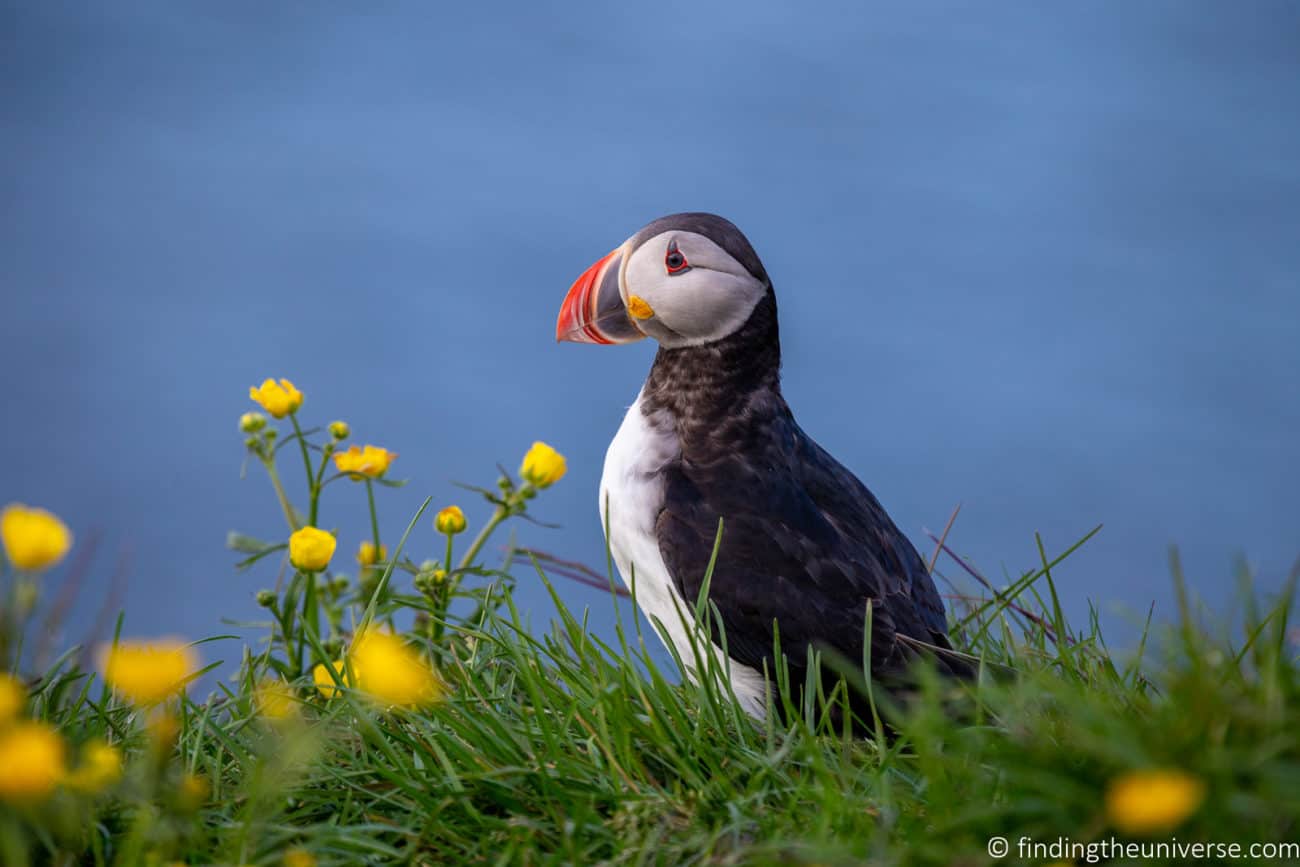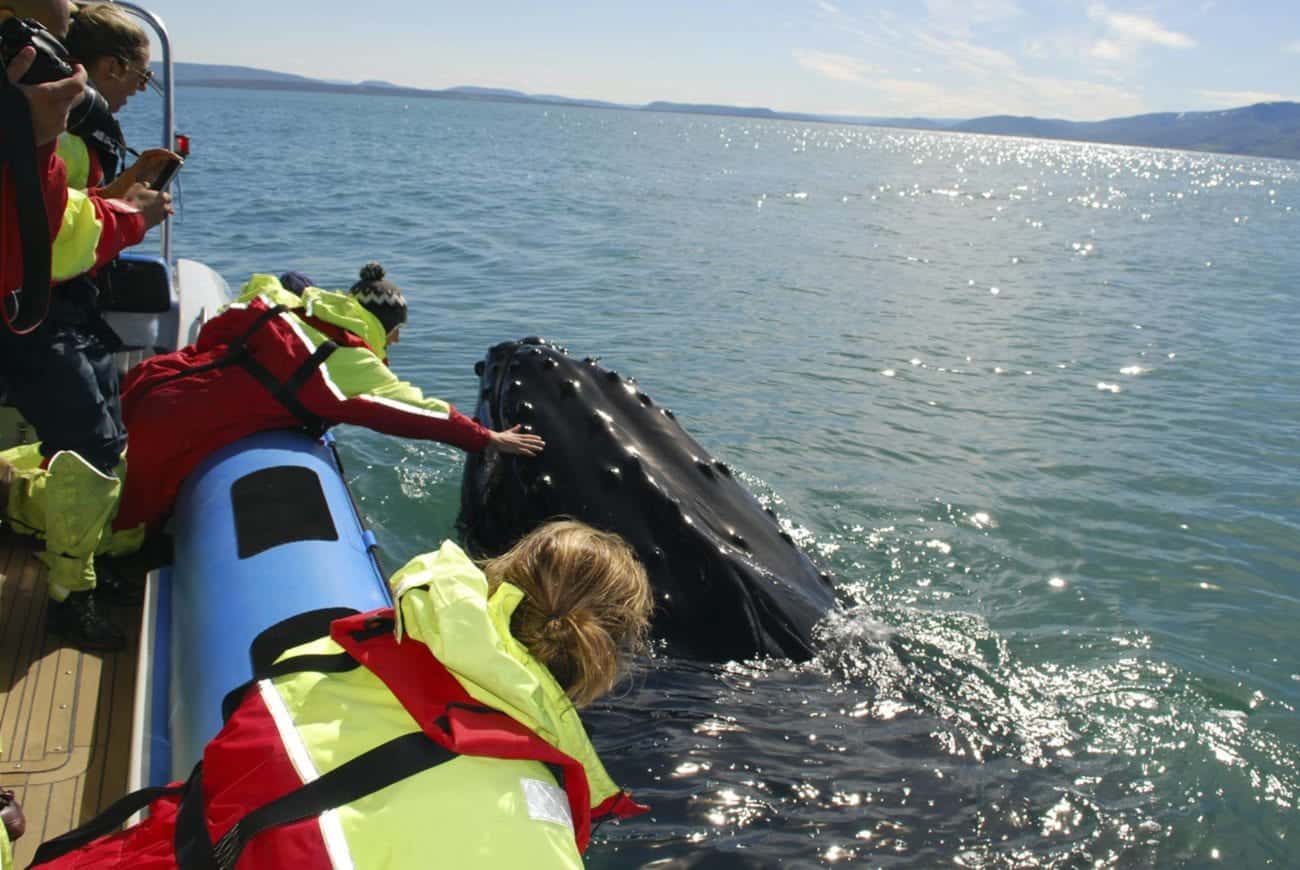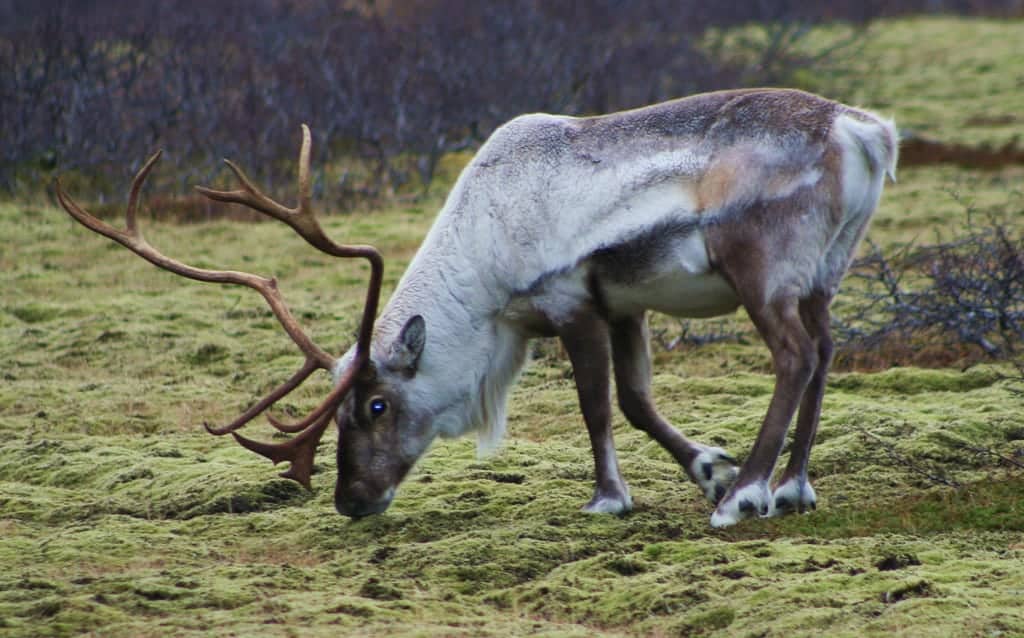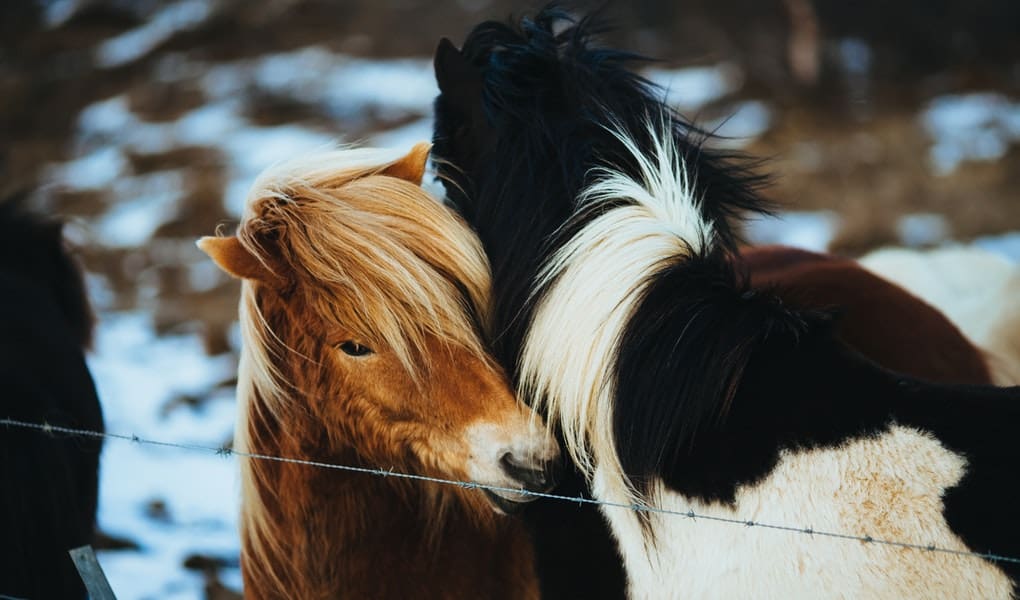Icelandic Wildlife
Iceland has become famous for its breathtaking nature and incredible natural phenomena like the Northern Lights and the Midnight Sun. But Iceland is also a paradise for all kinds of wildlife. From sea mammals, like whales and seals, to land animals like reindeer and foxes. Many of the myths surrounding Icelandic wildlife have to do with polar bears and penguins but those are most definitely not on the list of animals found in Iceland. Although the ice in Ice-land’s name might give a different picture. However, and many don’t know this, but Iceland is actually home to some of the largest bird populations in the world, including the adorable puffins.

Icelanders live in close harmony with nature and the elements. Which has created a unique bond with the animals of our Arctic island. There are few places in the world like Iceland, where you are able to easily view puffins, seals and foxes in the wild. To help you make the most of this we have put together a handy guide on how you can view the Icelandic wildlife. The categories are set up by animals and where you can best enjoy their company.

Remember to always treat Iceland‘s fragile nature and wildlife carefully and with respect. After all, Iceland is their home as much as ours.
Where to find Whales in Iceland?
North Iceland is undoubtedly the most popular region to see the whales of Iceland. Those gentle giants are surprisingly keen on getting close to the boats, playing frolic in the surrounding waters. The humpbacks will jump into the air and killer whales will gracefully tip-up form the ocean for some fresh air. And, possibly, a bit out of curiosity as well. The North of Iceland is known as the place where you can see the most species, with a record of nine different whales in one tour!

Husavik and Eyjafjordur were among the first places in Iceland to offer whale watching tours and Husavik has been dubbed the Whale Watching Capital of Iceland. The combination of favorable weather and sailing conditions and the number of whale species local to the area makes for an unforgettable experience every time. Husavik also has an impressive whale museum where you can learn more about these magnificent creatures.

However, if you don’t have time to visit the North of Iceland, there is no need to fear. There are amazing whale watching tours offered from Reykjavik heading out right from the harbor downtown. This is truly a memorable experience that takes solely 3 hours and will have you back in the bustling city as soon as you step ashore. The view of Reykjavik from the sea is an added bonus during the tour!
Seals in Iceland
Between the towns, Blonduos and Hvammstangi lies the mystical Vatnsnes peninsula, known for its varied wildlife. Especially that of seals which dominate the territory. The seals have a long lasting history in the Vatnsnes area which can be traced both through the location names in the area and the local ongoing folklore tales!

Vatnsnes is home to the largest seal colonies in Iceland and at the Icelandic Seal Center in Hvammstangi, you can learn all about these beautiful and charming mammals. From Hvammstangi you can join an incredible seal and nature watching tour.
Puffins in Iceland
Iceland is home to sixty percent of the world’s Atlantic Puffin population. So, there are plenty of places in the country where you can see these adorable little birds. The south coast is home to a number of puffin colonies, like Dyrholaey and Reynisfjall. Giving you an opportunity to see the birds in their natural habitat and experience the stunning nature of the south coast.

The remote and extraordinary Westfjords are a paradise for bird watching enthusiasts. Latrabjarg is one of Europe’s biggest bird colonies. Not only because of thousands of birds taking advantage of the shelter from predators to lay their eggs and raise their younglings but also due to a great variety of specieses. The Westfjords‘ remote setting means birds have not experienced humans. Thus respectful nature photographers can come quite close to birds. Which makes for unique photographic opportunities. Látrabjarg has a large number of puffins, making it a great destination for that perfect puffin Instagram image!
The Arctic Fox – Iceland’s only indigenous animal

The Arctic Fox is the only mammal native to Iceland perhaps due to its thick fur which is ideal for the cold climate near the arctic. It lives wild in most areas of the country but in Hornstrandir Arctic Foxes enjoy the same freedom as the birds in Latrabjarg. It is a special experience viewing these beautiful foxes playing together and roaming in the wild. You can learn more about the Arctic Fox and even see some young cubs in the summer at the Arctic Fox Center. The Fox Center also offers guided tours that help visitors view foxes in the wild.

Another place famous for Arctic Fox spotting is Thorsmork, the valley of Thor. This hiking utopia has numerous foxes galloping around. Many of them have grown accustomed to the visitors and come close to see if they can share your lunch. There is something exceptionally gorgeous about these creatures. We surely hope you get to meet one of your travels in Iceland!
Reindeer in Iceland
Wild reindeer used to live all over Iceland but today they only live in the East. There are around 4800 reindeer roaming the highlands in East Iceland but they seek lower ground in the winter and can often be seen along the roads. The reindeer were originally imported from Norway. Mostly for farming purposes but that practice was quickly given up and now they live wild in herds. Skjoldolfsstadir in Jokuldalur is a reindeer center and guesthouse right in the middle of reindeer country. It is truly a recommended visit!

Domestic Animals in Iceland
Some animals that you will be meeting in Iceland are unique to Iceland. This usually has to do with the country’s isolation and therefore pure breeding of the animals for centuries. These animals include the Icelandic Sheepdog, Icelandic cows, Icelandic hens, Icelandic horses, Icelandic sheep and Icelandic goats.

Many of these animals have developed trades to help them live a better life in Iceland. A good example being the Icelandic horse that grows an extensive fur coat every winter only to shed the hair in summer. This wardrobe-change keep the horse perfectly equipped for each occasion!

Let’s get to know some of the Domestic Icelandic animals a bit better!
Icelandic Horses
The Icelandic horse is world-famous for its friendly disposition, sturdy nature, and five gaits. The fifth being tölt, exclusive to the Icelandic horse. It is a soft gait, where three of the horse’s legs touch the ground at the same time creating a more stable position for the rider. You can wave bye-bye to the stomach hurling gallop or trot and sit back and relax on the magical tölt!

While the Icelandic horses are not wild animals, you may see herds of them loose in the countryside. These horses belong to local farmers but are let out to explore and unwind. This is said to be one of the key factors in their playful characters and passionate mentality. Icelandic horses are not trained until they are five years old. So younger horses wander loose in herds during the summers. This experience helps them to grow up to be confident and friendly both around humans and other horses.

You can find Icelandic horses all around the country but Skagafjordur in the North, the South Coast and West Iceland are particularly known for their fantastic breeding.
The horse center in Borgartun in West Iceland is a great place to learn more about this unique and purebred animal. As well as taking a riding tour through the beautiful area or even indoors if the weather isn’t agreeable. Icelanders have always had a special relationship with the Icelandic horse. They were used for everything from travel and farming to searching for and herding sheep. Nowadays horses are mostly used for recreational riding, competitions and fall sheep round-ups. But, it is still a vital part of Icelandic life.
The Icelandic Goat
The Icelandic goats are sadly on the brim of extinction. Twice has the population gone under 100. However great measured are being taken now to preserve the species most of which are being done by Johanna Bergmann. Johanna is a goat farmer in West Iceland who is vigorously fighting for their survival. Her farm, Háafell is somewhat of a goat sanctuary and the relationship between her and the goats is almost fairy-tale like.
Fun facts: twenty of Johanna’s goats played roles in the famous dragon/goat scene in season four of Game of Thrones. You might just recognize them if you visit and don’t worry this has not gotten to their head. They are still very chill and friendly!
The Icelandic Sheepdog
The Icelandic Sheepdog is one of the more popular dogs in Iceland. There are many different dog species found in Iceland including Border Collies, Labradors, German Sheepdogs, Bichon Frise, Pugs and the list goes on but somehow this sparky fur bundle always keeps its place. There is something so wonderful about these dogs, who have a curly tail and a double-thick coat. They do tend to bark a bit but their loyalty, friendliness and wits have you forgetting all about that pretty quickly. The Icelandic Sheepdog is first and foremost a working dog who tends to keep a watch out for things. They are excellent at herding!
They are said to be descendants of sheepdogs from Denmark and Sweden but today they are completely their own species. With the isolation, again, playing the largest part.

These dogs are great family dogs and get along with both children and other animals. They also tend to be very cuddly, a trait that will melt even the biggest cat-person!